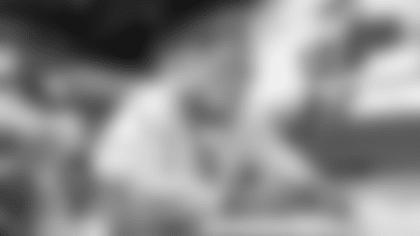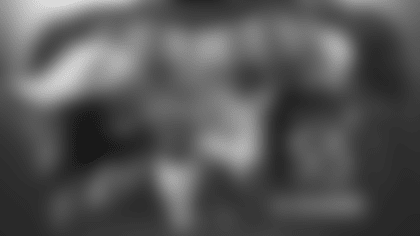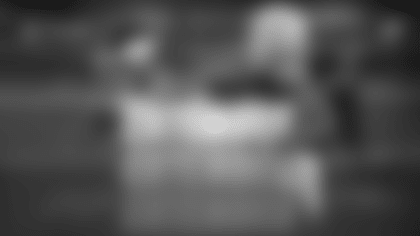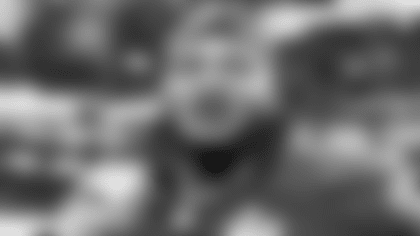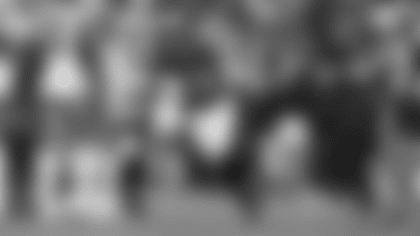We've got some changes coming to the NFL in the 2025 season, enough that you could use a little primer prior to the 2025 NFL Draft (while you are searching for something to focus on, you see).
With that, Eagles Assistant General Manager Jon Ferrari, who was part of the Eagles' delegation at the recent NFL Annual Meeting in Florida, discusses the changes that have been made (we know that there are some topics still on the table for future discussions by the league's owners).

Rule: Permanent changes to the kickoff
1-A. By Competition Committee; amends Rule 6, to make permanent the new form of free kick play implemented in 2024 designed to 1) resemble a typical scrimmage play by aligning players on both teams closer together and restricting movement to reduce space and speed and 2) promote more returns, subject to the following changes: (a) modifies the alignment requirements for receiving team players in the setup zone; (b) changes the dead ball spot after a touchback to the 35-yard line if the ball lands in the end zone and is downed in the end zone by the receiving team or goes out of bounds behind the receiving team's goal line.
Jon Ferrari: "It makes last year's one-year experiment rule permanent with a couple of changes. First, the touchback dead ball spot, it goes to the 35-yard line – it was the 30-yard line in 2024.
"The idea, they went from a 21 percent return rate in 2023 to a 33 percent return rate last season. We went up nine percent in kick returns over 2023 to 2024. And then they looked at those 33 percent and the injury rate was that of a normal scrimmage down -- a run or a pass play from scrimmage -- which is what they wanted, because the injury rate was so much higher with the old kickoff rules. So, what they want to do is now, knowing that we have taken the time and space out of the collisions on kickoff and lowered the injury rate significantly – now we can even get that return rate up higher. So, with the touchback spot at the 35-yard line, we've created a real deterrent from kicking touchbacks. The league projects that returns will rise significantly and add excitement to the kicking game, which is what they really want.
"The second part of it is they changed the formation on the kickoff. Previously, the return team had to have seven players on the line of scrimmage and then two floaters that were within five yards of the front between the 30 and the 35 (yard lines). And then they could have two returners. Now you can have three floaters, so you can have more sophisticated blocking schemes.
"Hopefully in May (at the Owners Meetings) we will vote to make a slight change to the declared onside kick – instead of having everyone aligned on the 34-yard line and the kicker on the 35 – everyone can be aligned with the kicker on the 35. So instead of having to travel 11 yards to recover an onsides kick, they only have to travel a true 10 yards, which should make a little difference."
Rule: Regular season overtime rules change
2-A. By Philadelphia; aligns the postseason and regular season overtime rules by granting both teams an opportunity to possess the ball regardless of the outcome of the first possession, subject to a 10-minute overtime period in the regular season.
Jon Ferrari: "We had initially proposed this in 2022 with Indianapolis to change regular season and postseason overtime. At that time, they only wanted to change the postseason, which we did. We had 37.5 percent of overtime games in the 2024 regular season end on first-drive touchdowns.
"This rule change gives team B a chance to possess the ball and match that touchdown. And then if you match that, you're likely to go for two and win the game right there. We think that's a good change, a positive change. It deemphasizes and this has been a big thing Jeffrey (Lurie, Eagles Chairman and CEO) has talked about for a long time – how do we make the coin toss less impactful? This is the way you do it. The average overtime touchdown drive in the league is around 5 minutes. If a team uses 9 minutes, 59 seconds and then kicks a field goal as time expires in overtime, the game is over. That just is so very rare. So we anticipate that Team B's drive after Team A's touchdown drive will be meaningful."
Rule: Instant replay expands ability to advise on-field officials
3, By Competition Committee; amends Rule 15, to expand Instant Replay's ability to advise the on-field officials on specific, objective aspects of a play and/or to address game administration issues when clear and obvious video evidence is present.
Jon Ferrari: "The most important thing to know about this: Replay assist cannot put a flag down on the field. They can only pick flags up. For example, if a facemask is called on the field and it's clear and obvious the facemask was not contacted in any way and there were a couple examples of that last year. That the grab was on the shoulder not the facemask and if replay shows that is clear and obvious, replay can tell the referee to pick the flag up for that facemask.
"This expansion only covers certain personal fouls that were not included in the 2024 expansion of replay assist and player safety fouls; hits on defenseless players, horse-collar tackles, facemasks, tripping, roughing the kicker."
Approved Bylaw: Teams can designate two players to return from Injured Reserve
By Competition Committee; amends Article XVII, Section 17.16 of the Constitution and Bylaws, to permit clubs to designate two players for return at the roster reduction to 53 players.
Jon Ferrari: "This was the rule that was in place last year and they just made it permanent."
Approved Bylaw: Postseason teams have 2 additional players designated for return from Injured Reserve
By Competition Committee; amends Article XVII, Section 17.16 of the Constitution and Bylaws, to permit clubs participating in the postseason to receive two additional DFRs increasing the maximum from 8 to 10.
Jon Ferrari: "In place last year, now permanent. So, you get 8 total players designated for return in the regular season and 2 in the postseason."
Approved Bylaw: Third tiebreaker is Point Differential
By Competition Committee; amends Article XVIII, Section 18.5 of the Constitution and Bylaws, to insert Point Differential as the third tiebreaker for awarding contracts.
Jon Ferrari: "When you make waiver claims, If two teams are tied, they start going to tiebreakers. Point differential, which would not be the third tiebreaker in a playoff seeding formula, it becomes the third tiebreaker in this rule for awarding waiver claims."
Approved Resolution: Travel plans for two-day free agent negotiating period
G-1A. By Pittsburgh; for one-year only, permits clubs to have one video or phone call with no more than five prospective Unrestricted Free Agent during the Two-Day Negotiation Period. Permits clubs to make travel arrangements with such players upon agreeing to terms.
Jon Ferrari: "The biggest impact here is that once you've agreed to terms with a player, it allows the team to arrange the travel instead of having to wait until after the league year starts, essentially delaying the travel. The player can't travel until after the league year starts, but you can arrange the travel once the player and the team agree to terms on a deal."
Approved Resolution: K-Ball prep adjustment
G-2. By Baltimore, Cleveland, Houston, Las Vegas, Minnesota, Philadelphia, and Washington; to permit clubs to prepare kicking footballs ("K-Balls") before game day, similar to the process permitted for game footballs.
Jon Ferrari: "So I don't know if everybody knows this, but there's two types of balls in the game. There's game balls, quarterback balls we call them, and then there's K Balls, which are only used in the kicking game.
"The game balls, we have custody of all the time. We practice with them. We break them in. We wear them out. There are rules about what you can put on them and what you can apply to them. And within the rules, we're allowed to break them in and get the quarterbacks comfortable with them. The K Balls, on the other hand, get shipped directly to the official's hotel. They would then be taken with the officials to the stadium and then given to the teams, and you have 90 minutes to break them in in the locker room the morning of a game."
"It made very little sense. The rule hearkens back to a day when kickers might manipulate the balls to the point where they would become less oblong and more round, maybe apply substances to them which made the kicker more comfortable. We didn't want that. So now the we are able to break them in, get comfortable with them the same way we do the game balls. So, all those game balls, kicking balls are all treated equally. There was a time when we were concerned about the integrity of game balls but the officials do an outstanding job examining the balls and making sure they are game ready. So now, officials will examine the K Balls before the game in addition to the game balls. It saves our equipment staff an unnecessary burdensome process to break those in and to have someone who has other responsibilities, has to step aside for 90 minutes and break in the K Balls."
Approved Resolution: Press box scouting credentials for playoff teams
G-3. By Washington; to permit clubs that may qualify for the postseason to obtain scouting credentials for two consecutive games (Weeks 17 and 18) played by a potential postseason opponent. Also requires clubs hosting Wild Card games to provide scouting credentials to all teams within the same conference who are participating in the postseason.
Jon Ferrari: What this does is make a team provide scouting credentials to potential postseason opponents in Weeks 17 and 18. Previously clubs could deny these requests for potential later-round playoff opponents. Now, they cannot deny the request.
Also … the NFL will use Artificial Intelligence to measure for first downs
Jon Ferrari: "It makes no difference in where they put the ball down. The officials still spot the ball the way they always have. What it does is it measures the distance – once the ball's been put on the ground – it measures the distance from the front of the ball to the line to gain. It gives you an accurate laser-driven reading. It doesn't spot the ball – it gives you a measurement once it's done. It replaces stopping the clock, bringing the chains on the field, measuring the line to gain with the chains, and the official putting his hand up and signaling first down or not. For the foreseeable future, the chain gang will stay on the field, but remain on the sidelines, not on the field measuring first downs."







